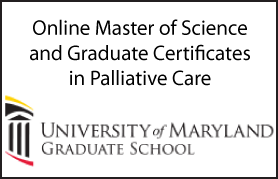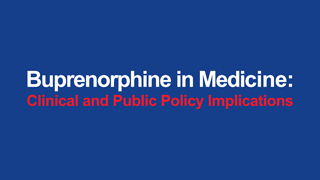Early administration of oral morphine to orthopedic patients after surgery
DOI:
https://doi.org/10.5055/jom.2006.0014Keywords:
postoperative pain, oral analgesics, oral morphine, orthopedic surgeryAbstract
Current pain treatment guidelines advise against providing analgesics for postoperative pain using intramuscular injections, as this generally provides poor pain relief. However, this route remains the most prevalent treatment method. Intravenous or epidural patient-controlled-analgesia methods reduce pain effectively but are expensive, labor intensive, and available to only a limited number of patients. We propose administering the analgesics using oral analgesics and have developed a simple protocol for treating postoperative pain by use of oral morphine. After a variety of orthopedic surgeries, patients were given “around-the-clock,” oral, immediate-release morphine. Efficacy of the treatment (pain scores and adverse effects) was assessed 24 ± 2 hours after surgery. Data were collected prospectively from 95 patients, who received an average of 61 ± 30 (SD) mg morphine. Average pain scores were 2.4/10 (± 1.4) at rest and 4.0/10 (± 1.4) during movement in bed. Nausea and vomiting, the most common adverse effects, were reported by 22 (23 percent) patients. Naloxone was not administered to any of the patients. Oral morphine given in the early postoperative time to patients after a variety of orthopedic surgeries was effective and safe.References
Fanciullo GJ, Ferrante FM: Analgesia after orthopedic surgery. In Ferrante FM, VadeBoncouer TR (eds): Postoperative Pain Management. New York: Churchill-Livingstone, 1993, pp 531-548.
Zaslansky R, Eisenberg E, Peskin B, et al.: Can morphine administered orally in the immediate postsurgical period make orthopedic patients “pain free”? J Pharm Care Pain Sympt Control. 2000; 8: 21-41.
Joint Commission on Accreditation of Healthcare Organizations: Pain management standards. Effective January 1, 2000. Available at www.jacho.org/standard/pain_hap.html. Accessed September 2005.
Cousins MJ, Brennan F, Carr DB: Pain relief: A universal human right. Pain. 2004; 112(1-2): 1-4.
Carr DB, Jacox AK, Chapman CR, et al.: Acute Pain Management Guideline Panel: Acute Pain Management: Operative or Medical Procedures and Trauma. Clinical Practice Guideline No. 1. AHCPR Pub. 92-0032. Rockville, MD: Agency for Health Care Policy and Research, Public Health Service, US Department of Health and Human Services, 1992, 20-21.
Carr DB, Goudas LC: Acute pain. Lancet. 1999; 1: 2051-2058.
Rowlingson JC: Postoperative pain: To diversity is to satisfy. Anesth Analg. 2005; 101: S1-S4.
Carr DB, Reines HD, Schaffer J, et al.: The impact of technology on the analgesic gap and quality of acute pain management. Reg Anesth Pain Med. 2005; 303: 286-291.
Berry PH, Chapman CR, Covington ED, et al.: Pain: Current understanding of assessment, management, and treatments. Natl Pharm Council. 2001; 13-17: 75-78.
Grass JA: Patient-controlled analgesia. Anesth Analg. 2005: 101 (Suppl): S44-S56.
American Pain Society: Principles of Analgesic Use in the Treatment of Acute Pain and Cancer Pain. Oakbrook, IL: APS, 1999.
Rawal N: Organization of acute pain services: A low cost model. Pain. 1994; 57: 117-123.
Bourke M, Hayes A, Doyle M, et al.: A comparison of regularly administered sustained release oral morphine with intramuscular morphine for control of postoperative pain. Anesth Analg. 2000; 90: 427-430.
Mantha S, Thisted R, Foss J, et al.: A proposal to use confidence intervals for visual analogue scale data for pain measurement to determine clinical significance. Anesth Analg. 1993; 77: 1041-1047.
Macintyre PE, Jarvis DA: Age is the best predictor of postoperative morphine requirements. Pain. 1995; 64: 357-364.
Rawal N: Management of Acute and Chronic Pain. London: BMJ Books, 1998, p 64.
Rogers MC, Tinker JH, Covino BG, et al.: Principles and Practice of Anesthesiology. St Louis: Mosby-Year Book, 1978, p 122.
Schwartz SI: Principles of Surgery. New York: McGraw-Hill, 1999, pp 467-477.
Gan TJ, Meyer T, Apfel CC: Consensus Guidelines for Managing Postoperative Nausea and Vomiting. Anesth Analg. 2003; 97: 62-71.
Moote CA: The prevention of postoperative pain. Can J Anesth. 1994; 41: 527-533.
McCormack JP, Warriner CB, Levien MG, et al.: A comparison of regularly dosed oral morphine and on-demand intramuscular morphine in the treatment of postsurgical pain. Can J Anesth. 1993; 40: 819-824.
Striebel HW, Scheitsa W, Philippi W, et al.: Quantifying oral analgesic consumption using a novel method and comparison with patient-controlled intravenous analgesic consumption. Anesth Analg. 1998; 86: 1051-1053.
Chaney MA: Side effects of intrathecal and epidural opioids. Can J Anaesth. 1995; 42: 891-903.
Choiniere M, Rittenhouse B, Perreault S, et al.: Efficacy and costs of patient-controlled analgesia versus regularly administered intramuscular opioid therapy. Anesthesiology. 1998; 89: 1377-1388.
Moore RA, Gavaghan D, Tramer MR, et al.: Size is everything: Large amounts of information are needed to overcome random effects in estimating direction and magnitude of treatment effects. Pain. 1998; 783: 209-216.
Downloads
Published
How to Cite
Issue
Section
License
Copyright 2005-2024, Weston Medical Publishing, LLC
All Rights Reserved












